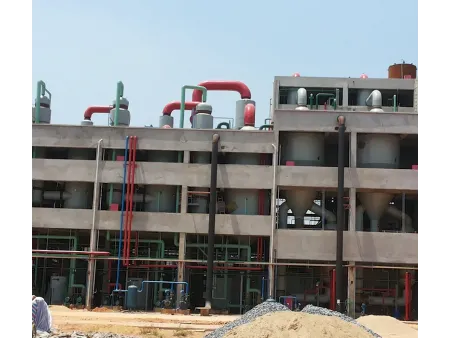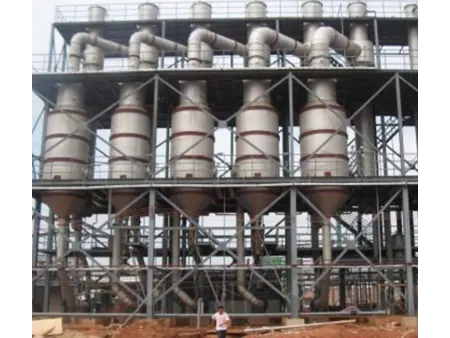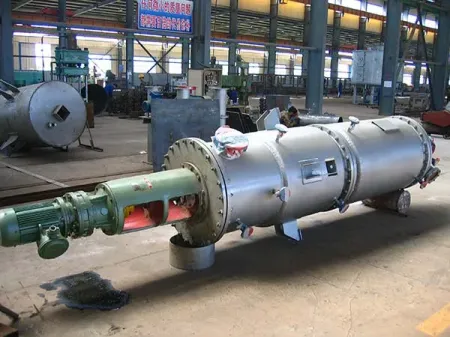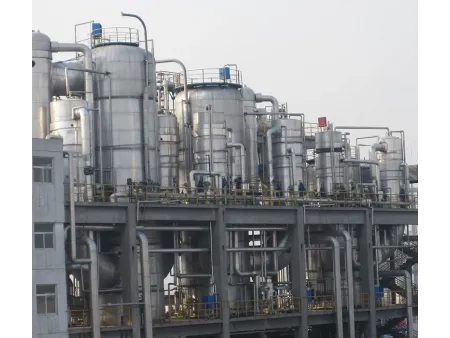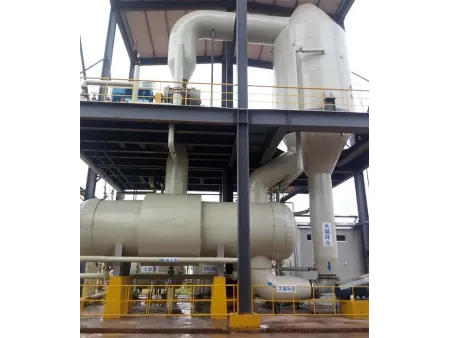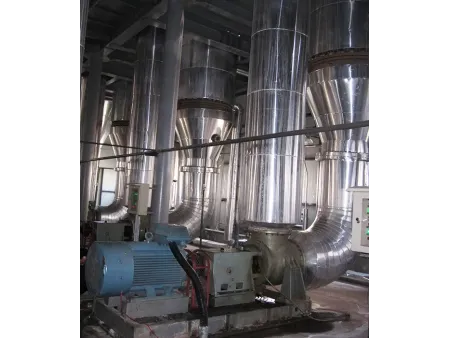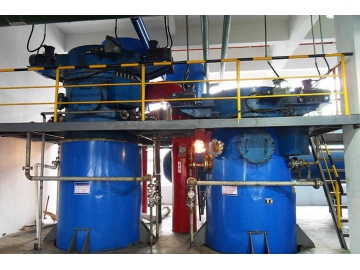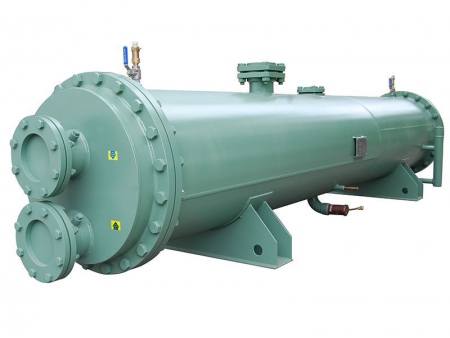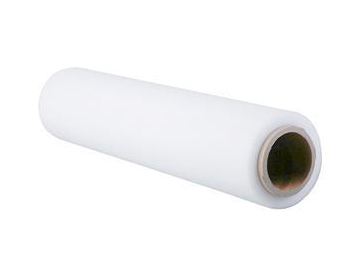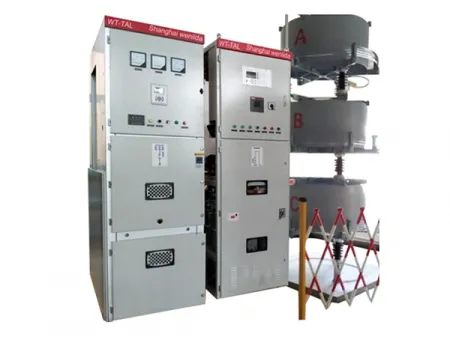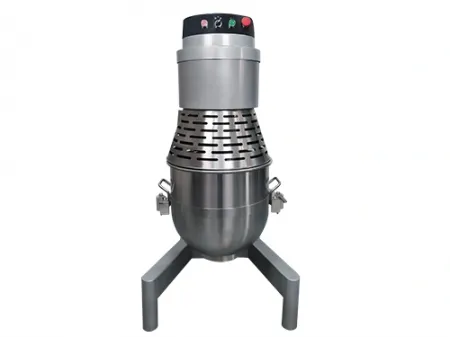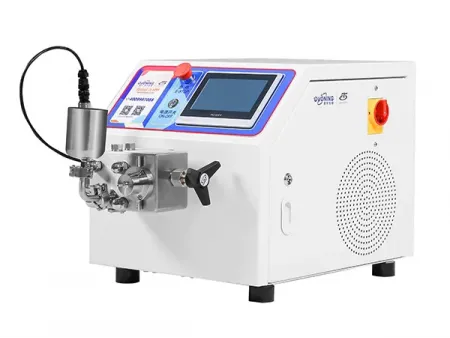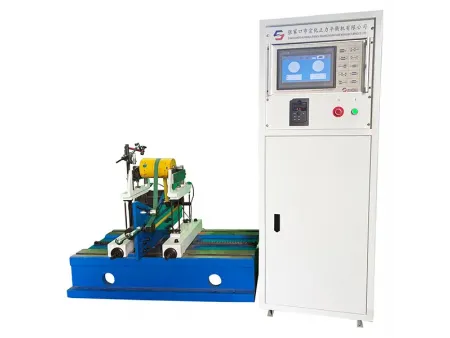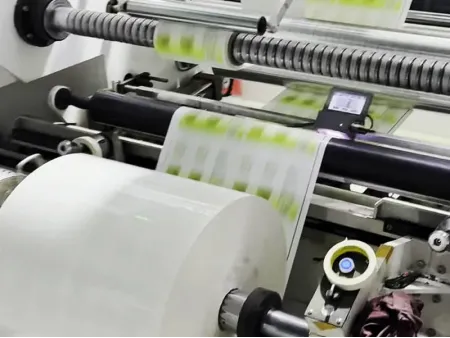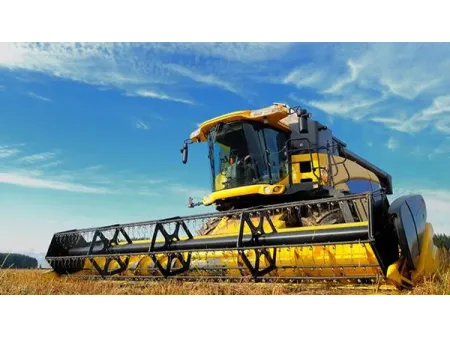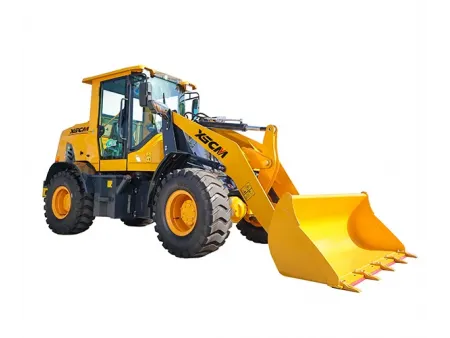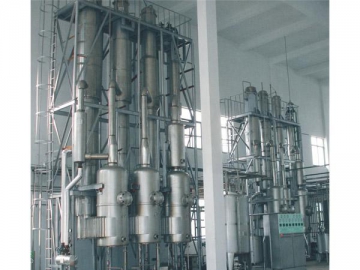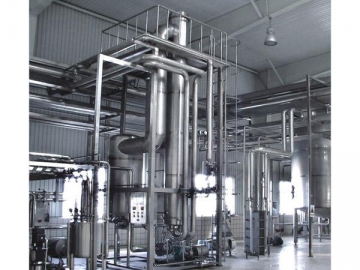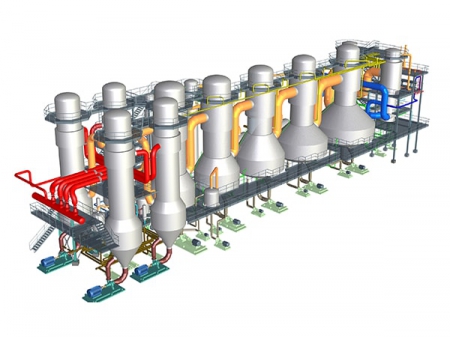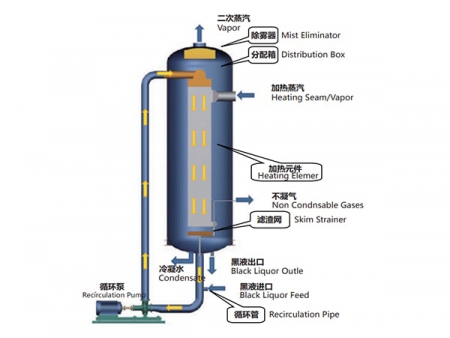Falling Film Evaporator
Industrial Evaporation Equipment
The falling film evaporator is a high-efficiency, non-circulating evaporator designed for the gentle and continuous evaporation of liquids. It is particularly well-suited for heat-sensitive materials and low-concentration solutions that are prone to degradation or unlikely to crystallize during processing.
In this evaporator, the liquid flows downward in a thin film along the inner walls of vertical tubes, enabling rapid heat transfer with minimal residence time. Operation under vacuum further reduces evaporation temperature, making it ideal for thermally sensitive liquids. This ensures consistent product quality, maximizes energy efficiency, and makes the falling film evaporator especially suitable for low-viscosity liquids in applications such as concentration and solvent recovery.
Falling film evaporators are widely used in food manufacturing, pharmaceuticals, biotechnology, and environmental engineering. Typical applications include low-temperature, continuous evaporation and concentration of food ingredients such as milk, glucose, starch, and xylose, as well as waste liquid recovery and solvent recycling processes.
| Model | |||||
| Evaporation rate (kg/h) | 300-2000 | 1200-4000 | 3000-15000 | 8000-50000 | 10000-65000 |
| Feed concentration (%) | Depending on the material | ||||
| Output concentration ((%)) | Depending on the material | ||||
| Steam pressure (MPa) | 0.1-1.0 (adjustable) | ||||
| Steam consumption (with heat pump) (t/h) | 0.65 | 0.38 | 0.28 | 0.23 | 0.19 |
| Cooling water consumption (feed in 32℃,feed out 42℃) (t/h) | 56 | 22 | 16 | 14 | 12 |
| Evaporation temperature (℃) | 45-90 | ||||
Note: In addition to the listed standard models, custom designs are available upon request to meet specific customer requirements.
What types of liquids can a falling film evaporator handle?
Falling film evaporators are suitable for a wide range of applications, including:
- Heat-sensitive materials
- Moderate to high-viscosity liquids
- Chemical solutions
- Wastewater treatment
- Seawater desalination
How can foaming be controlled in a falling film evaporator?
Foaming can be minimized through the following strategies:
- Adjusting feed concentration
- Controlling operating temperature
- Adding antifoaming agents
- Optimizing equipment design
- Regulating vacuum level
- Controlling feed rate
- Performing regular cleaning and maintenance

